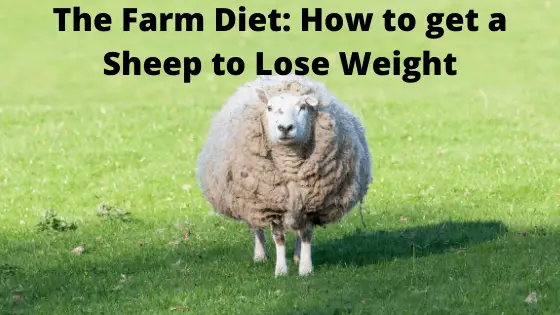Over WeightSheep – How to get a Sheep to Lose Weight
How to get a Sheep to Lose Weight –Sheep are small ruminants. They usually consume pasture, roughage and sometimes are given supplemental foods such as hay and corn. Losing weight in sheep is technical as it becomes difficult to lose weight as well as to maintain the body’s basic metabolic activities. It is necessary to maintain a diet that encourages weight loss but at the same time supports the body’s basic metabolism. Weight loss mechanism in sheep is usually employed before breeding and to be more exact for breeding it is employed.
Methods Employed to Lose Weight in Sheep.
Following are the usual methods that can be employed to achieve the goal of losing weight along with maintaining basic metabolic activities required for healthy body prior to breeding. Over WeightSheep
Check Out Amazon Educational Resources for Raising Sheep
- Only water treatment
- Only Alfalfa feeding
- Oats feeding
- Restrict sugary snacks
- Avoid overfeeding
- Increased exercise
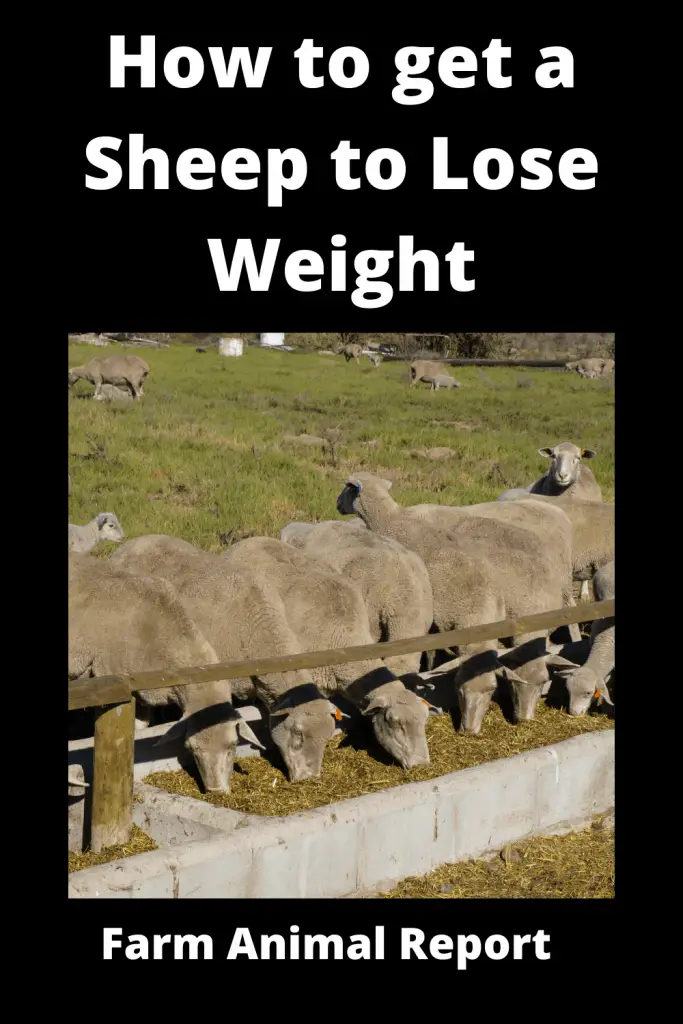
Flushing
The practice of increasing nutrient intake and body condition prior to and during breeding is called flushing.
Purpose of Flushing
The purpose of flushing is to increase the rate of ovulation and hence to increase the lambing rate.
Response to Flushing Employed
The response to flushing is influenced by the following factors
- Age of ewes ( mature ewes show greater response)
- Breed ( prolific breeds are least responsive)
- Body Condition ( thin sheep respond more then in average condition )
- Stage of the Breeding Season ( greatest response is seen in early and late breeding season)
Flushing is mostly employed in sheep that are thin and slimy and are in the stress of the previous lactation. There seems to be no response in sheep that are already in above average condition.
Only Water Treatment
This was the method applied to fatty sheep to encourage weight loss, especially in the sheep for breeding purposes. In this method before breeding the animal is kept completely off feed for two weeks and treated only with water prior to breeding. This used to help them breeding the sheep. But nowadays this method is not applied as it is inhumane to keep animals off feed for such a long period of time and it may interfere with normal body metabolic activities\health. It may do more harm than good. But it has been practiced for longer periods of time as there was no alternate due to lack of research and advancement in the handling of sheep.
Method
The animal is kept tied and prohibited from eating any type of feed. The animal is kept at home or farm where you keep them and avoided to go to pasture. The animal is provided with an abundant supply of water. It unleashes the animal. But it has been found successful in enhancing the rate of ovulation and chances for conception during the breeding season are increased.
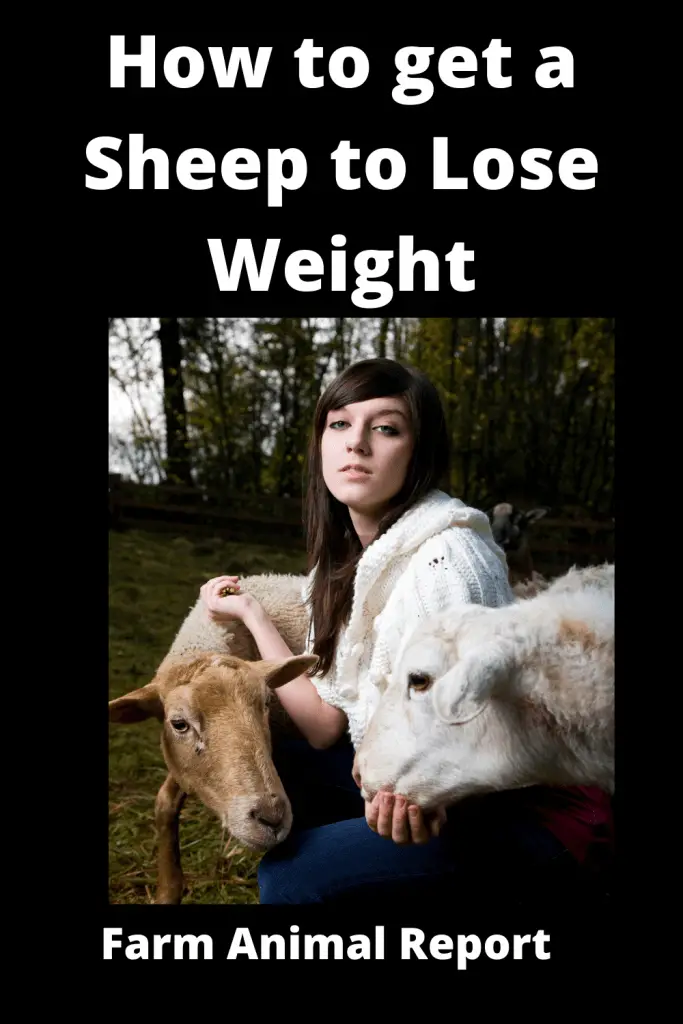
Alfalfa Feeding
Alfalfa feeding may be the best-employed method to encourage weight loss and maintaining health at the same time. During this period all types of grasses and supplemental food should be prohibited. Sheep should be kept on sole alfalfa ration. It reduces the protein content and increases fiber content in the feed. The body becomes dependent on body reserves of underlying fat and has to utilize its reserve fats to maintain its basic metabolic activity so helps in encouraging weight loss and maintaining health. During the metabolic processing of the body, fat water is produced that quenches the thirst and the animal drinks less water while the animal is kept on ration. Water demand is increased but to a limit.
Even the alfalfa ration may be too rich to help sheep not to lose weight so it is necessary to maintain the amount of alfalfa ration to each ewe to encourage weight loss.
See Our Extensive Guide – 16 Ways to Make Money Sheep Farming
Sources of Alfalfa
Alfalfa belongs to the legume family but is also considered a herb. It has long been used as fodder for animals and also has a history of being used as medicine. It is also a good source of vitamins. Alfalfa is grown in almost every part of the United States but its growth can be limited by poor soil, leaf and stem diseases and poor adaptive conditions.
Oat Feeding
Oat feeding is utilized in poultry for leaning and trimming of birds so oat could be fed to sheep for the purpose of leaning and losing weight. But, unfortunately, this cannot be utilized to serve the purpose of lose weight. In some experiments, it has been found that when oat ration is mixed with alfalfa ration at the ratio of half oat ration and half alfalfa ration then it reduces the protein content from 17% to 14.5% in the feed. But it cannot be fed a lot to the sheep because it has a fairly high amount of fiber content. So it must be fed in good amount to each ewe that it encourages weight loss along with maintenance of health. Alone it cannot be fed as it has supplemental effects and may be a cause for gaining fat I;e weight. So it is always used in combination with alfalfa ration to attain desired results.
Sources of Oats
Oats are a rich source of vitamins and minerals like copper zinc and other trace minerals. They grow in fields like wheat and barley the year around. It is of two types
- Winter oats
These are sown in September month and harvested in spring.
- Spring oats
These are sown in spring and harvested in the august month.
Oats like the season of cool weather and rainy season for its growth so it is best suited to temperate zones and grows successfully and can be supplied in combination with alfalfa to sheep for leaning of muscles.
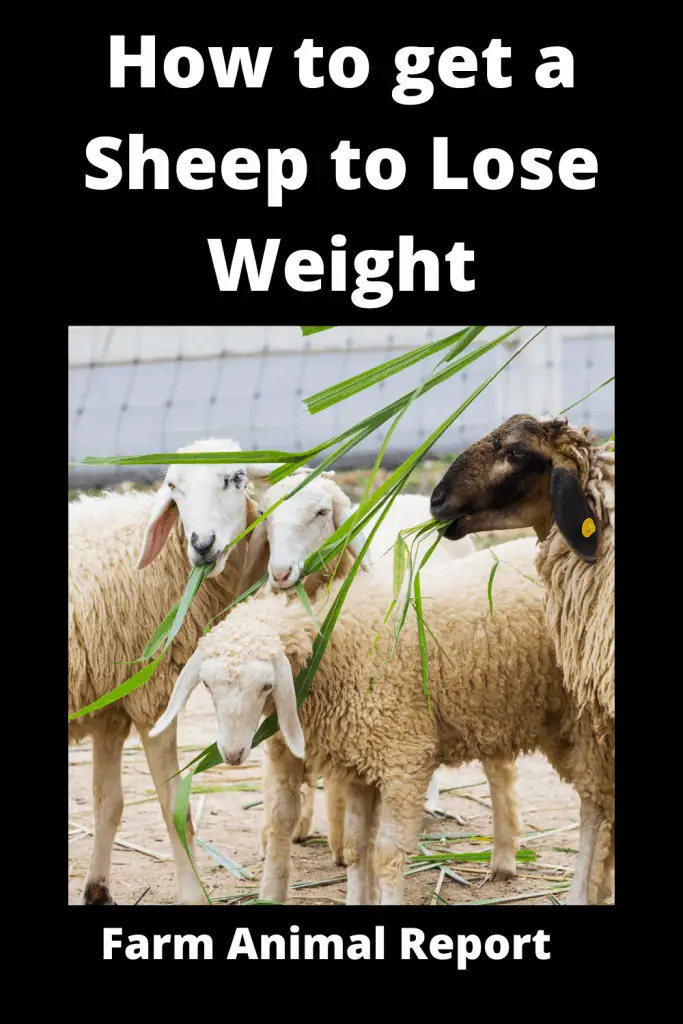
Restraining Sugary Snacks
Sugary snacks might be a reason for gaining weight. Sugary snacks might include fruits like overripe melons from the garden. This sugary stuff helps slower the body mechanisms and helps the body to store fat as reserve fat. This sugary stuff must be avoided as it comes under the definition of overfeeding. To maintain body shaping and enhance leaning and trimming of body animals must be voided of sugar material. For the purpose of good to an animal, limit your love in this regard and avoid molasses and other sweet diets that are carbohydrate-rich.
Sources of Sugary Stuff
The sources for sugary stuff include a variety of products including sugar products like watermelons, molasses, and other sweet fruits. These must be prohibited especially when you are trying your sheep to lose weight. Sweets are rich sources of sugars i.e carbohydrates and starches. These are used by the body and through anabolic reactions, it is converted to fats and stored in the body so these must be prevented as they help them to achieve bodyweight. These are not involved in losing weight but help sheep to prevent further weight gain i.e help in losing weight by other methods employed.
Increased Exercise
Exercise is practiced to lower the body weight in overfed or overweighed sheep. It can be employed as the flock is kept on pastures or grazing. Animal moves to pastures for grazing purpose and feeding is all in all dependent on grazing the pastures. Or the sheep herd is fed on fodder or ration and for exercise purpose, the animal is made to run in the area where they are kept. To achieve the goal of exercise the cattle or buffalo can be kept near the herd that helps sheep to run or compete for space and survival that makes them agile and active and increased exercise purpose is achieved.
Keeping them on grazing is the best-employed method for assuring increased exercise.
It is very necessary to handle them gently. They must be moved slowly, calmly and quietly. Do not allow splinter groups to develop.
How to Confirm your Sheep is Overweight?
It is very difficult to access whether the sheep are overweight or not. It becomes difficult to access because the body of sheep is covered by wool but it is possible.
For this purpose, an imaginary baseline is considered along the length of the backbone. Then it is palpated to locate the position of bones in the vertebral column. If the bones are easily palpated then it is sure that your animal is not overweight. And if the bones become difficult to palpate then it shows your sheep is overweight.
For this purpose, another method that can be employed as a healthy sheep is considered a landmark and other animals i.e sheep are compared with that one standardized sheep.
Another method used is body scoring the sheep is given score on the basis of appearance, walk, eyes and other dominant features. The ideal body score is compared with each sheep and body condition is accessed.
Effects of Overweight on the Body of Sheep
The problems associated with overweight or obesity are manifold of which some are discussed
- It makes the act laboring and lambing difficult for ewes. if during parturition vet has to apply more force to pull the lambs out of body or it feels that your lamb is greater in size then it surely means that the sheep was overfed especially during last months of gestation
- It can be a contributing factor in uterine prolapsed, ( bulging out of the uterus through vaginal route )
- It surely has a negative effect on ovulation rate so it decreases fertility.
- When the animal is overfed it imparts a negative effect on the growth of mammary glands
- It can kill bummer lambs. ( lambs that have been rejected by its mother)
- It becomes uneconomical as the cost of feed is increased and feed is wasted as it does no good to the animal but does harm by reducing fertility. Hence, economics is disturbed.
- It can be a contributing factor in acidosis as the animal is kept high on grains the bacteria present in the rumen decompose carbohydrates to produce acids in excess amount. These, when produced in excess amount, may cause a life-threatening condition to the animal.
- It makes their wool fiber coarser and short.
- It makes the animal feel uncomfortable as it makes it difficult for breathing and lay down comfortably and puts extra pressure on the diaphragm.
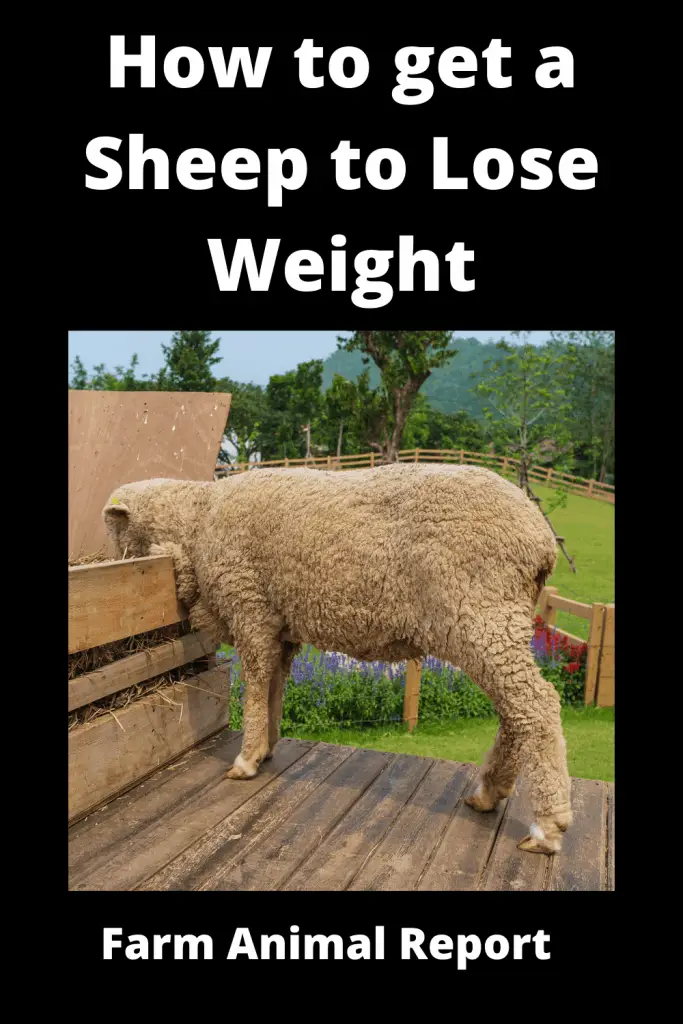
Weight may be Lost in Diseased Condition:
Sheep may also lose weight in diseased condition like
- Coccidiosis
- Johne’s disease
Coccidiosis
It is a protozoal infestation in sheep. Not all the coccidia in sheep is harmful rather some of them are harmful and remaining species are not harmful but provide some beneficial effects. Two of the species are mainly harmful
- Eimeriaovinoidalis
- Eimeriacrandallis
This usually affects the sheep aging four to eight months and is less apparent in the animals’ age three months or less. These may cause weight loss, mucus or blood in feces and diarrhea. This is companied by pain, straining and sometimes the death of the lamb. This can be diagnosed with bloody diarrhea and the presence of coccidian in feces. However, it is confirmed through fecal sample tests performed in the laboratory.
Johne’s Disease
It is a common disease of sheep. It is the chronic, contagious and fatal disease of sheep, cattle,, and goats. It mainly affects the intestine of ruminants causing them to swell up. This swelling results in the absorption of less amount of nutrients. This clearly means that the sheep are eating exactly the same amount of feed as earlier but now instead of gaining weight, it is continuously losing weight. It is caused by a bacterium belonging to the family of TB and leprosy and caused by Mycobacteriumavium. Up to seventy percent of sheep may never show signs of disease. As it involves digestive system sheep spreads the bacterium through its feces in the complete flock. It results in less yield of milk and carcass proportion is also decrease. It overall may result in ten percent loss of animals in the flock. To prevent the spread of disease as soon as any sheep is found infected it should be immediately culled. It is better to lose one sheep than the whole flock. Constant observation of animals is necessary as it is according to saying “it is better to be safe than to be sorry”.


